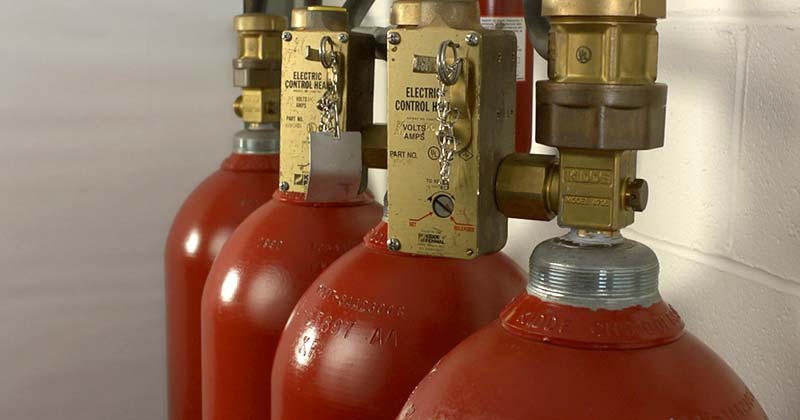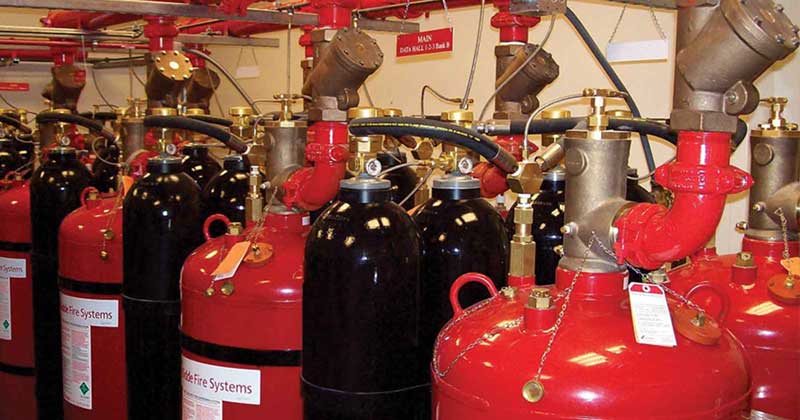While water is the oldest and most prevalent fire extinguishant, there are situations when the use of water may be hazardous, damaging, or impractical. This is where special hazards fire suppression comes into play. Using a clean agent, a specialty fire suppression system can quickly and completely extinguish a fire without damaging electronic components, such as servers, telecommunications equipment, or control panels. A special hazard can be an entire building, an individual room, or even a single piece of equipment. Some examples might include data centers, telecommunications facilities, and power generation plants.
Chemical and CO2 suppression systems

This type of fire suppression system utilizes dry chemicals, such as FM-200 or CO2, which are a non-conductive means of extinguishing fires. Chemical and CO2 systems provide safe, efficient, and effective fire protection for use in areas where sensitive electronic equipment needs protection, such as:
- Data centers and computer equipment
- Telecommunications facilities
- Power generation equipment
- Machinery enclosures
Special hazards fire suppression agents

A special hazards fire protection system includes detection and control coupled with a fire suppression system. Some common fire suppression agents used in these systems may include:
- Clean agents
- Inert gases
- CO2
- Water mist
- Hybrid systems
- Dry chemicals